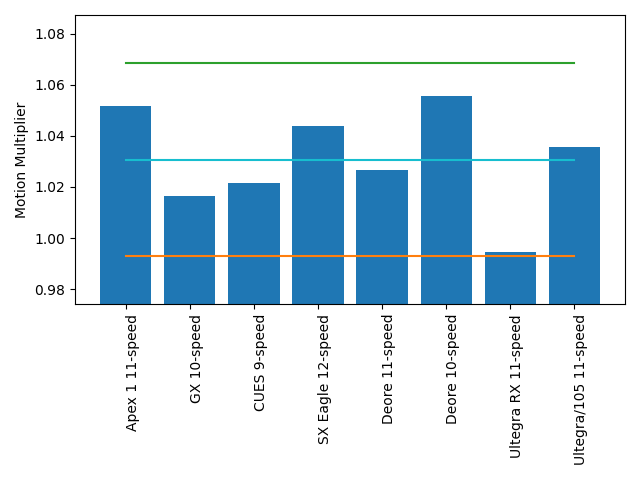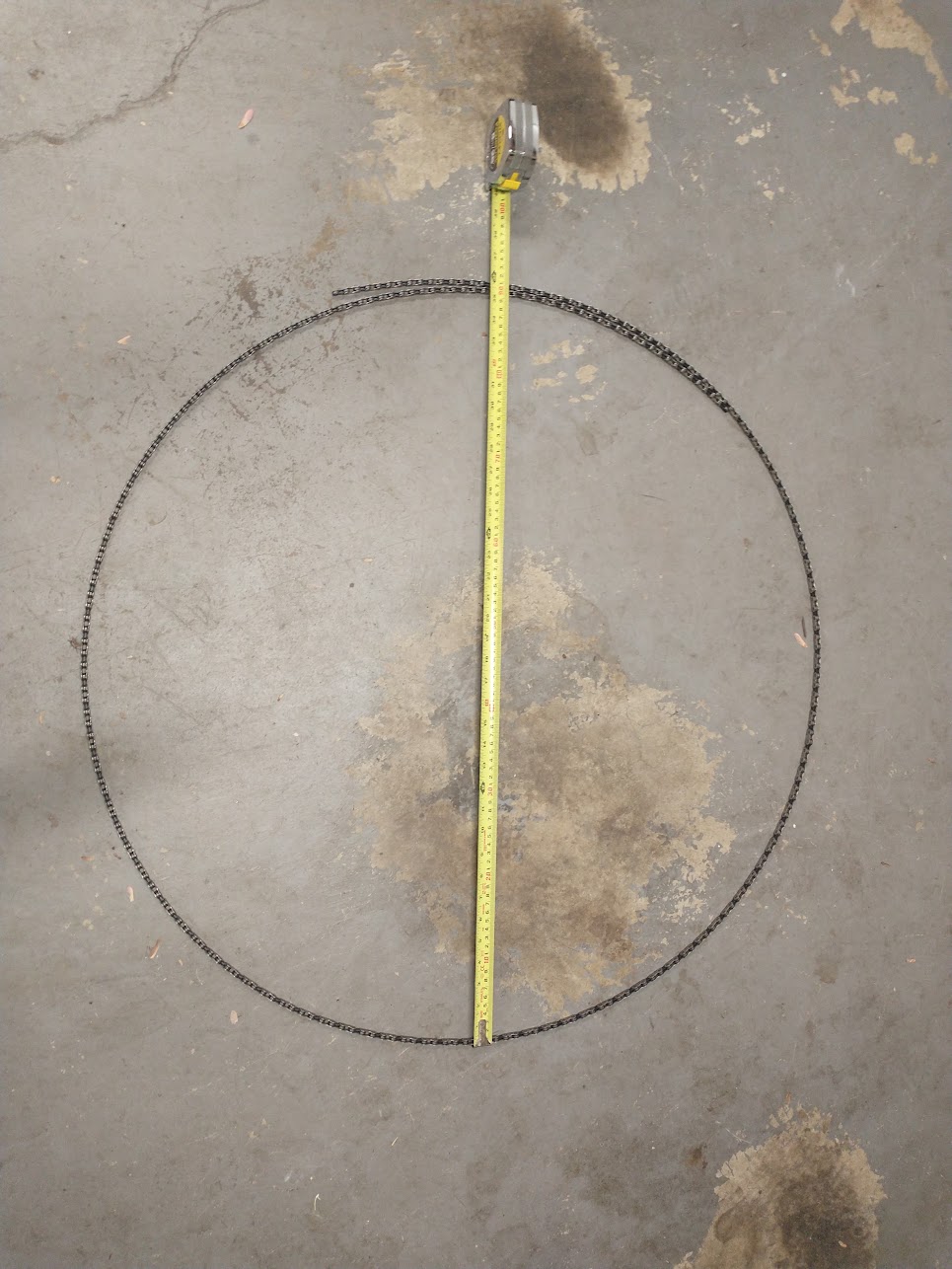Frequently Asked Questions
How do you determine compatibility?
What is a "Motion Multiplier"?
How do you determine compatibility?
Determining compatibility is a two-step process. First, a list of manufacturer-supported groupsets is analyzed to figure out tolerances. Second, all possible combinations of shifter, derailleur, and cassette are analyzed to see if they are within tolerance.
A combination is judged to be potentially compatible if each shift at the jockey wheel is between 0.5% smaller to 5.6% larger than the cog pitch, and that the chain makes at most a 1.2° angle with the cassette.
The comparison between the shift at the jockey wheel and the cog pitch is the "motion multiplier".
What is a "Motion Multiplier"?
The "motion multiplier" is the cog pitch divided by how far the jockey wheel moves per shift. Manufacturers do not appear to match the shift motion from the jockey wheel exactly to the distance between the center of each cog. The motion multiplier allows me to put a number to how big the difference can be, as well as the range of acceptable values.
In general, manufacturers appear to design the system so that the the cog pitch is 3.1% larger on average than each shift of the jockey wheel. This corresponds to a motion multiplier of 1.031. However, there is a lot of variation in this relationship, with some groupsets going as low as -0.5% (cog pitch is smaller than each shift) and some going as high as 5.6% (cog pitch significantly bigger than each shift).

Assuming that motion multipliers follow a normal distribution, we can create a range of motion multipliers that should cover 95% of all supported groupsets. Strictly speaking, if you tried to measure the motion multiplier of any random groupset out there, the motion multiplier of 95% of them should fall within the range from 0.993 to 1.069. This range of motion multipliers is used to determine compatibility. If a combo has a motion multiplier in this range, it is considered to be potentially compatible.

Where is your measurement data?
All measurement data is available at https://boothinator.github.io/derailleur-analysis/. There you will find pages with numbers and charts summarizing the measurements, as well as links to the raw data.
All analysis code is available at in my derailleur-analysis GitHub project under the MIT open source license. Feel free to use and modify it, but please credit me. Thank you.
How do you determine the maximum chain angle?
Similar to calculating the motion multiplier, each supported groupset is analyzed to determine approximately how far the chain is angled away from a cog in the worst case scenario. The maximum angle was observed to be 1.1°.
To calculate the angle that the chain makes with each cog, I calculated every cog position and jockey position and programmatically lined them up as closely as possible so as to minimize the difference in positions. Then, I assumed that there was about 2½ links between the jockey and cog in each position and calculated the angle for each position. I then determined the maximum angle across all shifts.
To determine the maximum angle for compatibility, I found the maximum angle that would cover 95% of all groupsets, assuming that this maximum angle follows a normal distribution. This number was found to be 1.2°, and this is the maximum angle that is used to determine compatibility.
In practice, using this angle did not rule out a large number of combos. The motion multiplier compatibility test largely agrees with this compatibility test.
You may wonder how it is possible to be shift properly with such a large angle between the chain and cog. It is possible because chains have a significant amount of side flex at each roller. Using a very long 10-speed chain, I flexed the chain sideways until it overlapped itself and formed a circle. It overlapped at the 224th roller, which indicates that each roller allowed for 1.6° of sideways flex. To be clear, the chain does not like this much flex and does exert some sideways force to straighten out, but a smaller angle could still be maintained without significant sideways force pushing the chain off of the desired cog.
